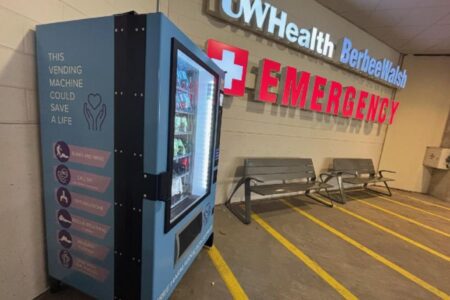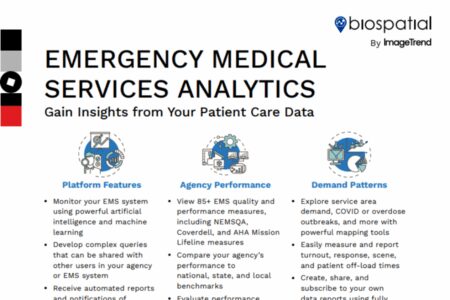In the fast-evolving landscape of healthcare, few priorities are as urgent (or as misunderstood) as interoperability. While much of the national conversation centers on hospitals and health systems, EMR interoperability is increasingly becoming an operational imperative for EMS agencies too. Yet confusion remains. What does EMR interoperability actually mean? How does it differ from EHRs or ePCRs? And why should EMS leaders—not just hospital IT teams—be invested in it?
In part one of this report series, let’s unpack the core concepts, dispel common myths, and explain how EMS and hospital teams can work together to improve care continuity, documentation integrity, and decision-making, powered by real-time, interoperable data.
Clarifying EMR, EHR, and ePCR in Healthcare Documentation
While often used interchangeably, EMR, EHR, and ePCR represent distinct parts of the healthcare documentation ecosystem. Understanding the difference is key to solving the interoperability puzzle.
- EMR (Electronic Medical Record): A digital version of a patient’s chart within a single healthcare organization, usually a hospital or provider group. EMRs are often limited in scope, used primarily for internal documentation, and may not be shared across organizations.
- EHR (Electronic Health Record): A broader, shareable version of a patient’s medical history that spans multiple providers and care settings. EHRs are designed to travel with the patient across systems, forming a more comprehensive health record.
- ePCR (Electronic Patient Care Report): Created by EMS professionals in the field, the ePCR is often the first clinical record in an emergent episode of care. It includes vital signs, treatment timelines, medications administered, provider impressions, and other time-sensitive data. Tools like ImageTrend Elite™ generate this report.
EMR interoperability, then, refers to the ability of these hospital-based records to exchange data with external systems like ePCR platforms. It means EMS-generated data doesn’t remain siloed—and hospital systems can ingest, interpret, and act on that information in real time.
Why EMR Interoperability Matters for EMS
For many EMS agencies, interoperability has long felt like someone else’s problem—an IT concern confined to hospital walls. That perception is changing rapidly. EMS has evolved into a more integrated arm of healthcare, and the ability to send, receive, and interpret clinical data across systems is no longer a luxury. It’s a clinical and operational necessity.
Real-time interoperability with EMRs improves:
- Field Decision-Making: When EMS providers can access patient history—such as medications, allergies, or chronic conditions—before initiating care, they’re better equipped to make safe, informed decisions under pressure. Treatment Query, for example, enables this kind of bidirectional access to EHR data when both systems support it.
- Hospital Handoffs: Seamless transmission of ePCR data into hospital EMRs ensures that emergency department teams can act quickly and confidently without duplicating documentation or losing critical information in the transition.
- Legal and Quality Assurance: Structured, time-stamped records that flow directly from EMS into hospital systems create a defensible documentation trail. This supports both compliance and performance improvement efforts on both sides.
- Community Health and Coordination: In an era of value-based care and regional health networks, EMS plays a crucial role as a frontline data generator. Interoperability ensures that EMS is fully integrated into broader population health and care coordination initiatives, not left at the margins.
A real-world example of EMR interoperability in action comes from Orange County EMS; they achieved an 83% hospital outcome data return rate across 20+ hospitals by implementing bidirectional data exchange—streamlining quality improvement workflows and strengthening EMS-hospital coordination.
Debunking Common Interoperability Myths
Despite its importance, EMR interoperability is still shrouded in myths that stall progress. Here are a few of the most persistent:
- Myth #1: “Interoperability is a hospital IT problem.” Not anymore. EMS agencies that embrace interoperability are seeing improved patient outcomes, stronger relationships with hospitals, and better justification for funding and resources.
- Myth #2: “EMRs can’t connect with EMS systems.” In reality, tools that follow national data standards—like HL7 and FHIR—can bridge the gap between prehospital and hospital records. Platforms like ImageTrend’s Health Information Hub (HIH) are built for this kind of exchange.
- Myth #3: “ePCR data doesn’t belong in the hospital EMR.” This myth is not only outdated, but also dangerous. EMS records often contain the only documentation of care provided before a patient arrives at the hospital. Making that data accessible to emergency department clinicians supports better care, reduces errors, and improves outcomes.
Interoperability is About More Than Technology
While software tools like HIH make interoperability possible, the real goal is not technical. It’s clinical. It’s operational. It’s systemic. Interoperability means every provider—from EMTs in the field to specialists in the ICU—can act on a shared understanding of the patient’s journey.
It means data isn’t just collected, it’s connected. And EMS isn’t just a dispatch and transport service—it’s a vital link in a truly integrated healthcare system.
Closing the Interoperability Gap with Standards-Based Exchange
The most effective interoperability solutions are grounded in open standards, structured data, and national network access. Tools that support HL7, FHIR, and NEMSIS standards ensure that EMS and hospital teams aren’t just exchanging PDFs, but truly interoperable clinical data that’s actionable across systems.
With bidirectional tools like HIH and Treatment Query, EMS agencies can finally step into the same data ecosystem as their hospital partners to enhance patient care from curb to discharge.
EMR Interoperability Tools That Connect EMS and Hospital Care
EMR interoperability isn’t just about connecting software. It’s about connecting care. For EMS and hospital teams ready to move beyond data silos, now is the time to close the loop.
If you’re looking to enable seamless, bidirectional data exchange between EMS and hospital EMRs, explore ImageTrend’s Health Information Hub (HIH)—built to connect care teams in real time and improve clinical outcomes.
If you want EMS providers to access critical patient history at the point of care, Treatment Query lets them pull medications, allergies, and diagnoses directly from national EHR networks—before treatment begins.
Speak with one of our solution experts today to schedule a demo.




